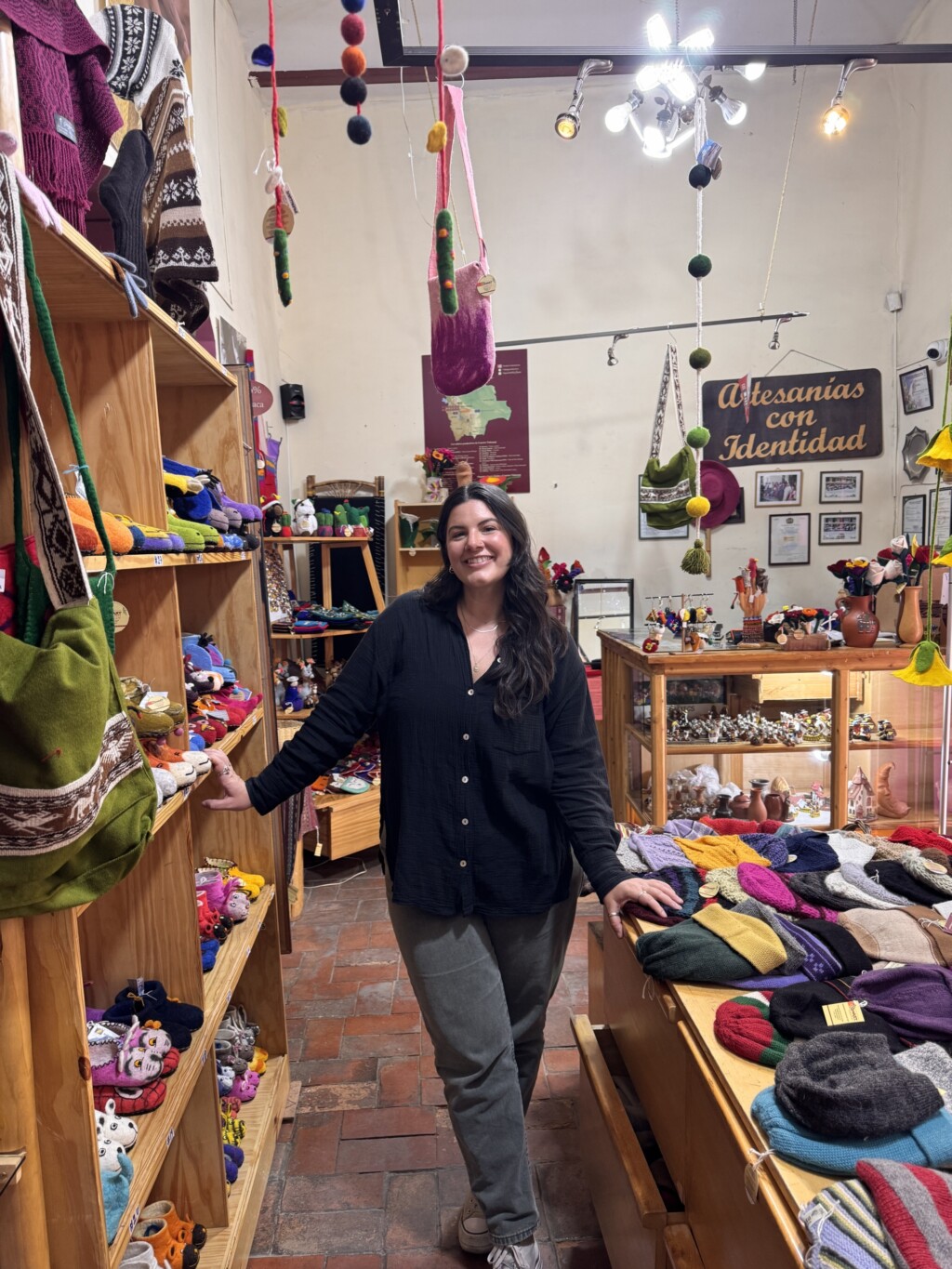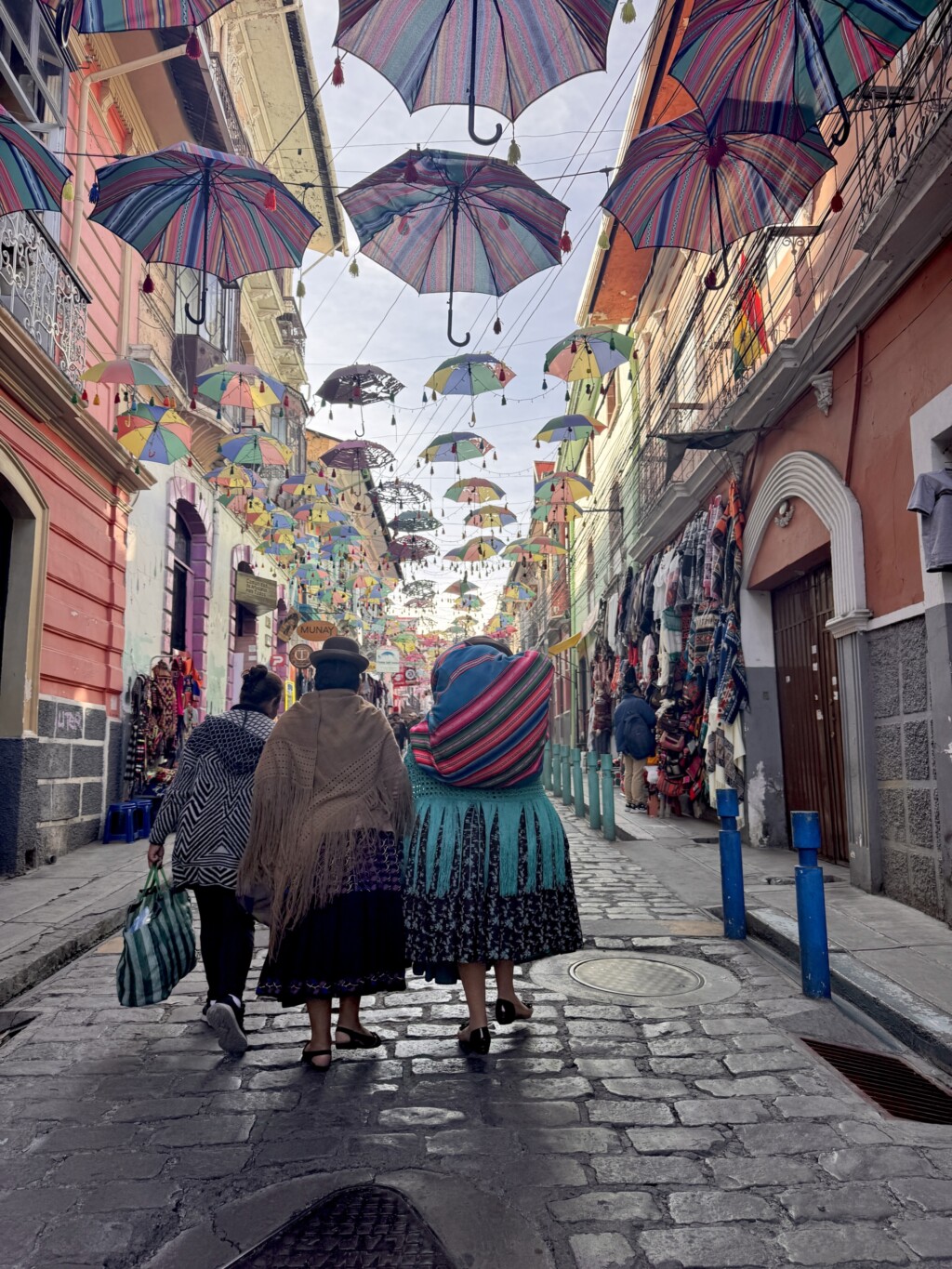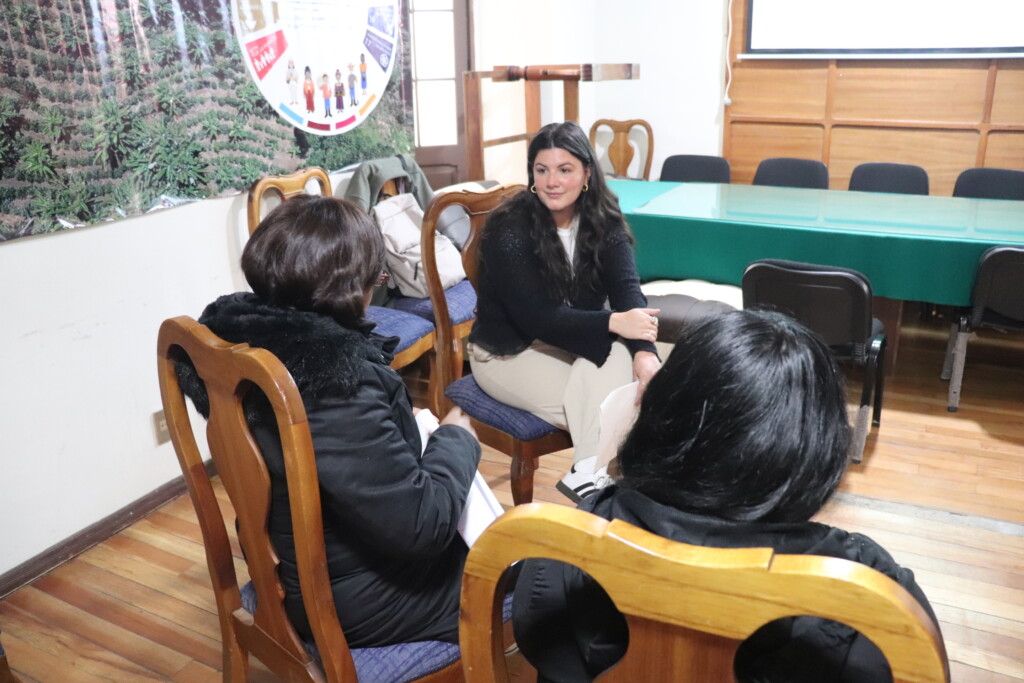Success story
Insights into the commitment, communication and dignity of indigenous craftswomen in Bolivia
In the tumult of international development narratives, some voices remain on the margins, often silenced or reduced to frozen clichés. Since my arrival in La Paz, it has been the voices of indigenous women artisans who have taught me to listen differently. Their hands weave more than textiles: they tell of struggles, hopes and worlds.
Listening differently
It was through my work with CECI that I became involved with RED OEPAIC, a unique network run by and for women artisans, mainly indigenous. They defend economic autonomy, the transmission of ancestral knowledge and inter-community solidarity that transcends regional borders. I was deeply inspired by their approach to development: rooted in the land, sustained by memory, focused on dignity.

In Bolivia, home to 36 recognized indigenous nations, cultural identity is not a thing of the past: it's alive and well. It can be seen in gestures, languages, markets and clothing. Craftswomen are the guardians of this heritage. And through their art, they affirm that it is possible to build a future without denying one's roots.
In this story, I wish to highlight their strength, their creativity and their unique way of inhabiting the world. Too often folklorized or invisible, they are at the heart of another vision of development - a vision where communication, when based on listening and respect, becomes a genuine tool for cultural justice.
A co-construction experience
RED OEPAIC, or Red de Organizaciones Económicas de Productores Artesanas, brings together over 2,500 artisan families across Bolivia. With the support of CECI's Volunteer Cooperation Program (PCV), the network strengthens its members' commercial capacities through the use of digital technology, with a particular focus on women and young people.
My mandate as communications advisor was to support these initiatives. I led workshops on social networking and product photography, to strengthen the ability of craftswomen to promote their work online, - and above all, how to tell the story of their art online without betraying its essence.
Hands-on training also explored taking photos with a phone, to encourage autonomous and accessible showcasing of their creations. But beyond digital training, it was important for me to create a space for reconnecting with the artisanal gesture. That's why I organized a traditional knitting and weaving workshop open to the public. This moment of sharing made it possible to publicize the immense work behind each piece, and to bring craftsmen and consumers together in a dynamic of mutual respect and recognition.
One of the most memorable encounters of my experience was with Doña Kristina. When she offered me the chance to try on the pollera - the traditional skirt of the Aymara Cholitas - and the bombín hat, it was a gesture of great generosity. It gave me a better understanding of the intimate cultural pride these women take in their daily lives.
Behind every traditional garment, there's a language. The tilted hat is not worn at random: it signals marital status. The aguayo, a colorful cloth worn on the back, embodies a link to the land, to family, to history. These are not “folk costumes”, but statements of identity, manifestos of dignity.
Mutual learning - learning to listen differently
As the meetings progressed, I came to understand that my role was not to “make” the craftswomen talk, but to create the conditions for them to express themselves fully, with their own words, gestures and silences. It wasn't a matter of filling in a form or conducting an interview: it was a matter of opening up a respectful space where words could emerge naturally, according to their own codes and rhythm.
Some spoke little, but their hands told of their knowledge. Others punctuated their discourse with symbols, legends, allusions to the Pachamama or sacred mountains. Each exchange was an invitation to slow down, to observe, to decode a language deeply rooted in culture.
Transmission time here is not about efficiency or profitability. It's about presence, patience and detail. And that's what these women taught me: that communication can be slow, but deeply meaningful.
In the context of solidarity, this changed my perspective. I came with tools, yes - but above all with the humility to learn. It wasn't a question of imposing knowledge, but of co-constructing on the basis of what already existed, a richness that is often underestimated.
Recognize, resist, connect
Supporting Aboriginal women artisans means more than just buying their products or publishing their photo on a brochure. It's about recognizing their role as bearers of knowledge, culture and vision. They are not the beneficiaries of development from elsewhere: they are the actors.
Changing the way we look at them means starting to support them more effectively. This means seeing them as partners, as experts in their own reality, and not as picturesque figures.
What if, in the context of international solidarity, we turned communication from a tool for visibility into a space for cultural resistance and narrative justice?
I don't want what I've experienced here to be a parenthesis. I want to turn it into a root. A root nourished by the patience, the listening, the quiet dignity of the craftswomen, by their way of saying “we're here” - without shouting, but with undeniable force.
Marie-Michelle Veillette
Communications volunteer with RED OEPAIC in La Paz, as part of the Volunteer Cooperation Program (PCV) implemented by CECI, with support from Global Affairs Canada.
Our partners
Thank you to our financial and implementation partners, without whom this project would not be possible. CECI's volunteer cooperation program is carried out in partnership with the Government of Canada.






